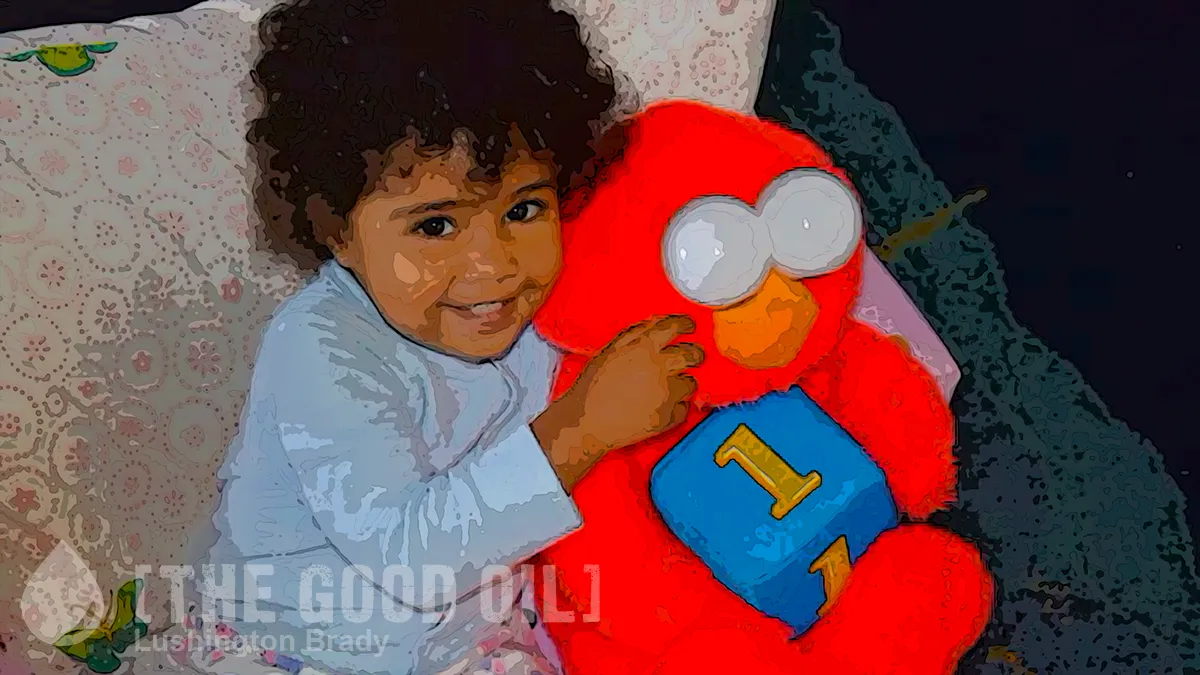Table of Contents
To turn a famously cynical communist saying on its head, a million deaths might be a statistic, but sometimes we can only come to grips with the horror of the statistics by examining the unspeakable tragedy of a single death.
It is a horrifying fact that Aboriginal children are at grossly disproportionate risk of violence and abuse when compared with other Australian children. The statistics, though, are too often just dry, impersonal, numbers on a bureaucratic report. A single death and a too-short and blighted life of just one Aboriginal child serves to hammer home the brutal reality behind the statistics.
I first reported on the death of little Kaydence Mills over two years ago. More shocking details have since come to light, especially on how this brutalised little girl was allowed to simply vanish from the radar of those who were supposed to care for her – for up to two years after her death.
Kaydence never had a chance: she was on the radar of child protection services even before she was born. Those same bureaucrats, though, not only took her from a safe foster family, but took two years after she was killed to even notice that she was missing.
Kaydence Hazel Mills was born in Cairns on September 23, 2014.
The ABC has been told an “Unborn Child High Risk Alert” had been issued for [her biological mother, Sinitta Dawita] – a flag that indicated there were already concerns about the baby prior to her birth.
The Department of Child Safety was worried about Kaydence’s biological father Robert Mills, who was considered a threat to both the child and her biological mother.
Kaydence was put into foster care at just five weeks old.
“The world was against her, and she just grew – she was so beautiful,” [foster carer] Sally told the ABC.
She said Kaydence adored broccoli, her panda toy and music.
Sally and her partner Nick remember the toddler breaking out in dance every time she heard the song, “Everybody Dance Now”.
“Her smile would make you smile … she loved to be loved and that’s all she knew,” Sally recalled.
“She came into our care, we showed her so much love, she didn’t know any different.”
Why Kaydence was taken from her foster parents and a safe home remains hidden under a pall of official and media secrecy. What isn’t a secret, though, is that child protection services prioritise Aboriginal ‘cultural safety’ above all else. That is, non-Aboriginal families are rarely allowed to foster Aboriginal children. This is the legacy of the so-called ‘Stolen Generations’ myth, that Aboriginal children were placed in white foster families, not because they were neglected but as part of some alleged genocidal plot. Forget that more far white children were removed from their families during the same period.
So now, successive generations of Aboriginal children are damned to being brutalised and abused – and murdered – in a ‘culturally safe’ manner.
On September 18, 2016, Kaydence was returned to Dawita after orders giving the department custody of the toddler were closed.
What happened was as grimly predictable as shocking.
Dawita and [Tane Desatge] – who had begun seeing each other in 2015, a year after Kaydence was born – left Tully with Kaydence in December 2016.
They told child safety officers they were moving to Chinchilla – 1,300 kilometres south – to get away from Kaydence’s biological father, Robert Mills […]
Within months of their move, Desatge began to hit Kaydence with a bamboo stick in the family's four-bedroom brick rental home at Chinchilla in Queensland’s Western Downs, a court would later hear.
Witnesses said the toddler “lived like an animal” and slept in the toilet at times.
The court heard the last time one witness saw Kaydence, she was lying on a red couch with a sheet draped over her, struggling to breathe.
Police say Kaydence was murdered sometime between February 16 and May 6, 2017.
After her death, Desatge and Dawita placed her body in an outhouse in the backyard of their Chinchilla home, before taking her to the Chinchilla Weir under the guise of a camping trip to bury her.
Child safety officers were told Kaydence was staying with an aunt.
For two years, Dawita and Desatge hid Kaydence's death – telling family members and friends a variation of the same lie.
Yet, the child safety department’s own manual requires workers to physically see every child in the house. If they’re not there, they have to track them down. If they can’t, at the very least they have to report them missing to police.
Child safety officers in Chinchilla apparently didn’t even know Kaydence existed until a year after her murder. The department is hiding behind the ‘legislation prevents us from commenting on individual cases’ excuse to avoid owning up to whether anyone even bothered trying to find her.
Nearly two years after Kaydence’s murder, her mother let slip to a nurse at a mental-health service that ‘she had a secret that she had been hiding from everyone’.
Dawita allegedly said the secret involved her ex-partner and one of her children, and that it had happened some time ago.
Although the conversation was reported, it was recorded by the department as a ‘child concern report’ – meaning the concerns did not reach the threshold for an investigation.
It wasn’t until eight months later that police were called to investigate Kaydence’s whereabouts.
Kaydence’s remains were found in March 2020 near the Chinchilla Weir. Desatge and Dawita were arrested and charged the same month.
Well, it was all a bit late, wasn’t it?









